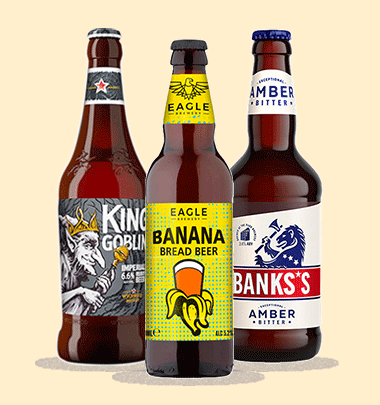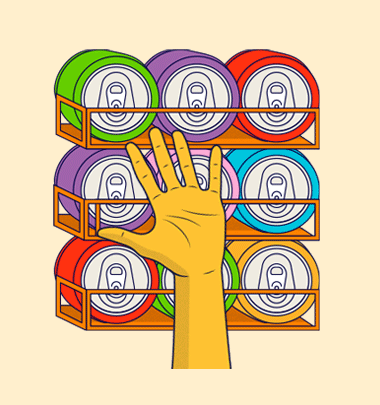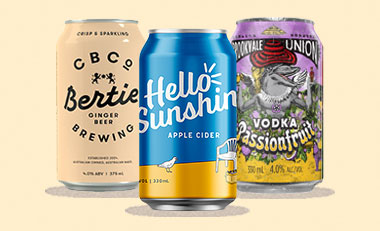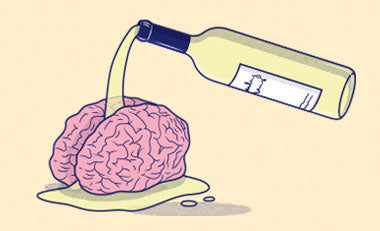4293850366015,
4456619769919,
4777349054527,
7163457208383,
7163483947071,
7163484405823,
7298246737983,
7298254962751,
7298276065343,
7298278391871,
7298279866431,
7298281766975,
7298286026815,
7213737869375,
1594002833471,
4456619769919,
1594002178111,
4631150428223,
4519330119743,
1999098839103,
6809936986175,
4777349054527,
4779355668543,
4866476376127,
1919134695487,
6553044484159,
4779288920127,
6618283737151,
1337458065471,
2178329473,
6552184586303,
1572782604351,
6617377767487,
2179189761,
4896701481023,
6782990778431,
6991514697791,
6841452036159,
6841462423615,
6991463776319,
4882911723583,
6689651458111,
7163484405823,
6991469183039,
7208705556543,
7118877294655,
7280529408063,
7213737869375,
7175331610687,
7212921684031,
7280535044159,
7200933314623,
7208703000639,
7228323528767,
7227775582271,
7213267353663,
7194724204607,
7122268717119,
7122267832383,
7122232967231,
7212954058815,
7208705556543,
7213737869375,
7208703000639,
7212919586879,
7213267353663,
4882638307391,
4882604752959,
6949523980351,
6693136138303,
7194501349439,
7194496761919,
7301722996799,
7194486669375,
7194499448895,
7163483947071,
7194498269247,
6809959268415,
6689831125055,
6988395315263,
6809959268415,
6988395315263,
7194499448895,
7194496761919,
7163483947071,
7194498269247,
7194486669375,
4671781142591,
1594002833471,
4456619769919,
1594002178111,
4631150428223,
4519330119743,
4309350744127,
1572817371199,
1572811112511,
4526417379391,
1572817469503,
4631200628799,
6691671015487,
4631182999615,
1999098839103,
6809936986175,
4528127443007,
4779310743615,
4777349054527,
1573244993599,
4779355668543,
4631284416575,
1572764713023,
4866476376127,
4182967025727,
4631178018879,
4631213604927,
10288544269,
1919134695487,
4360314224703,
8244564993,
4293850366015,
1572790272063,
6553044484159,
1792067436607,
8148043777,
6692252418111,
4779288920127,
4739950149695,
6618283737151,
1337458065471,
2178329473,
1572759961663,
6686149443647,
6552184586303,
6686143971391,
1572830740543,
1572782604351,
1337385386047,
4466042372159,
6990842527807,
4631178018879,
4779248287807,
7113382723647,
6686143971391,
6907077853247,
6984689909823,
6995195461695,
6995950469183,
7194499448895,
7194501349439,
7194496761919,
7194498269247,
7194486669375,
10288544269,
4739950149695,
1572827594815,
4882604752959,
6947303555135,
7191027744831,
4519330119743,
4309350744127,
1572817371199,
1572817469503,
4779310743615,
4779355668543,
4631284416575,
4866476376127,
4182967025727,
1919134695487,
4360314224703,
6553044484159,
1792067436607,
6552184586303,
6617377767487,
2179189761,
4466027462719,
6553021153343,
4896701481023,
6552200347711,
1900154519615,
4466044076095,
6782990778431,
6552165810239,
1572836999231,
7212954058815,
6689831125055,
7016262139967,
7122106351679,
7191027744831,
7122267832383,
7212919586879,
7348440662079,
7212954058815,
4456619769919,
1594002833471,
7194499448895,
7194496761919,
7280529408063,
4631150428223,
1572811112511,
7208705556543,
7212921684031,
7194501349439,
4519330119743,
7194486669375,
7348440662079,
6809959268415,
7213737869375,
7163483947071,
7280535044159,
7163484405823,
4779310743615,
6809936986175,
7194498269247,
7228337651775,
4631200628799,
4777349054527,
4631284416575,
7175331610687,
4779288920127,
4866476376127,
6693136138303,
7302173458495,
7228324249663,
7228311830591,
1572845289535,
6617377767487,
7175338229823,
1572790272063,
6782990778431,
7208703000639,
7212919586879,
1999098839103,
4779355668543,
6692252418111,
4631182999615,
7200933314623,
6689831125055,
1572817469503,
6552184586303,
7141165826111,
6991496544319,
4931183837247,
6996001521727,
6991521579071,
6991469183039,
6991496544319,
6991463776319,
6991514697791,
6990842527807,
7117567033407,
6691671015487,
4740051206207,
4740166058047,
4882604752959,
4741163843647,
1572764713023,
6692252418111,
4740125851711,
4740075421759,
4741188091967,
4882638307391,
1572765368383,
6691730096191,
6692712513599,
6835570212927,
6835474530367,
6835176898623,
6835316031551,
6835226214463,
6691671015487,
8148043777,
1572827594815,
2178329473,
1999098839103,
6809936986175,
1572764713023,
4360314224703,
1572759961663,
2179189761,
1572845289535,
1572775428159,
4740166058047,
4740051206207,
4741163843647,
7175338229823,
7191027744831,
7171003908159,
7191024369727,
7212954058815,
1572764713023,
10288544269,
8244564993,
1572790272063,
8148043777,
4739950149695,
1337458065471,
1572759961663,
1572830740543,
1337385386047,
1572845289535,
1572827594815,
1572775428159,
8148044097,
4740003987519,
4740166058047,
1572765368383,
1572775198783,
10288731277,
4882906021951,
4881914134591,
4679845019711,
4740125851711,
4740051206207,
4679849115711,
4679864811583,
4741163843647,
4740075421759,
4882899402815,
4741241929791,
4741207785535,
4882911723583,
4881890902079,
4741227413567,
4882638307391,
4882604752959,
4830062411839,
1572845617215,
4830197153855,
4741249204287,
4881698488383,
6834034442303,
6947266953279,
6835474530367,
6835570212927,
6947327180863,
6947303555135,
7181483900991,
6835176898623,
7181487800383,
6950450659391,
6950372999231,
6950397050943,
6950417694783,
6950799933503,
6950384828479,
6949526339647,
6950808584255,
7181629390911,
6950464323647,
6949523980351,
7288587124799,
7318043197503,
7318038609983,
7317806252095,
1594002178111,
1594002833471,
4631150428223,
4456619769919,
1572811112511,
4519330119743,
6809936986175,
4631200628799,
4631284416575,
7212921684031,
4866476376127,
6991514697791,
1572845289535,
7175338229823,
1572790272063,
1572764713023,
1999098839103,
6692252418111,
6618283737151,
4779310743615,
8148043777,
4739950149695,
2178329473,
8244564993,
4896701481023,
6691671015487,
10288544269,
2179189761,
4360314224703,
1919134695487,
1572782604351,
1572775428159,
7191027744831,
4309350744127,
7348440662079,
7191024369727,
1572836999231,
6835474530367,
6835570212927,
6835176898623,
6835316031551,
6835226214463,
4440213094463,
6674801000511,
1572759961663,
1337385386047,
6950799933503,
6950879494207,
4309350744127,
1572817371199,
1572811112511,
4526417379391,
1572817469503,
4528127443007,
1572764713023,
4866476376127,
10288544269,
4360314224703,
8244564993,
4293850366015,
1572790272063,
4739950149695,
1337458065471,
2178329473,
1572759961663,
1572830740543,
1572782604351,
1337385386047,
1572845289535,
1572827594815,
1572775428159,
8148044097,
4740003987519,
4740166058047,
1572765368383,
1572775198783,
10288731277,
4882906021951,
4881914134591,
4679845019711,
4740125851711,
4679849115711,
4679864811583,
4741163843647,
4740075421759,
4882899402815,
4741241929791,
4741188091967,
4741207785535,
4882911723583,
4881890902079,
4741227413567,
6834476974143,
4882638307391,
4882604752959,
7228337651775,
4830062411839,
1572845617215,
7302728450111,
7175331610687,
6809936986175,
6809959268415,
6834034442303,
6617377767487,
7200933314623,
7348440662079,
4631150428223,
4777349054527,
6809936986175,
4309350744127,
1919134695487,
1337458065471,
2178329473,
1572782604351,
6809959268415,
4741188091967,
6841478217791,
6841462423615,
6737087791167,
6991463776319,
6991469183039,
7118390689855,
7175338229823,
7181483081791,
7181483900991,
1572775198783,
4896701481023,
1572811112511,
4519330119743,
4866476376127,
1572817469503,
6552184586303,
6782990778431,
6553044484159,
6689651458111,
7175331610687,
7171004334143,
7171004760127,
7171003908159,
4360314224703,
10288731277,
4741227413567,
4741241929791,
4830062411839,
2179189761,
6844688072767,
4840091975743,
6947233759295,
7194724204607,
7212921684031,
7212954058815,
7213267353663,
7213737869375,
4882911723583,
7227775582271,
7228324249663,
6988395315263,
6618283737151,
7118906753087,
6737410752575,
7141165826111,
7118390689855,
7118877294655,
7118385643583,
7113382723647,
6618210730047,
7213267353663,
7288587124799,
7327194546239,
7327215288383,
7327216599103,
7327221121087,
7327223873599,
7327225413695,
7327225577535,
7327191498815,
7298278391871,
7298276065343,
7298246737983,
7298254962751,
7298286026815,
7298279866431,
7298281766975,
1573244993599,
1594002833471,
4456619769919,
4631150428223,
4519330119743,
4631200628799,
4631182999615,
1999098839103,
6809936986175,
4779310743615,
4777349054527,
4779355668543,
4631284416575,
4182967025727,
4631178018879,
4631213604927,
1919134695487,
6553044484159,
1792067436607,
4779288920127,
6618283737151,
6552184586303,
6617377767487,
2179189761,
6553021153343,
4896701481023,
6552200347711,
1900154519615,
6737410752575,
6782990778431,
6809959268415,
6552165810239,
1572836999231,
6991514697791,
6618210730047,
6841452036159,
6841462423615,
6841478217791,
6988395315263,
7212954058815,
6991463776319,
7194499448895,
4779248287807,
6689651458111,
7097052364863,
4654574567487,
7163484405823,
7194496761919,
7163483947071,
7117567033407,
6991521579071,
7199538774079,
6936398200895,
6936401870911,
7110733496383,
7193427509311,
7199522390079,
7199528681535,
7257245450303,
4631150428223,
4631200628799,
4631182999615,
4631284416575,
4631178018879,
4631213604927,
7097052364863,
7097081692223,
7280529408063,
7280535044159,
7280202743871,
4159631589439,
4671781142591,
6996007485503,
1572764713023,
1572765368383,
7181487800383,
6949526339647,
7318038609983,
10288544269,
10288731277,
6950397050943,
7318043197503,
4580088807487,
4440213094463,
4162048917567,
1858919235647,
4159631589439,
4438852927551,
4579951476799,
4580141891647,
4840091975743,
6674801000511,
6947233759295,
6844942581823,
6844954312767,
6844688072767,
6844709830719,
6934775758911,
4631178018879,
7280202743871,
4779248287807,
6990842527807,
7113382723647,
1573244993599,
4631178018879,
4779248287807,
7097052364863,
6990842527807,
7109993529407,
7113382723647,
7280202743871,
7298278391871,
7298276065343,
7298246737983,
7298254962751,
7298286026815,
7298279866431,
7298281766975,
4293850366015,
1573244993599,
1572790272063,
1337458065471,
6834476974143,
4526417379391,
1572811112511,
4528127443007,
4739950149695,
4740003987519,
4679845019711,
4679849115711,
4679864811583,
8244564993,
1572817371199,
4309350744127,
4866476376127,
1572817469503,
6691671015487,
6691730096191,
6692252418111,
6692712513599,
4309350744127,
6841478217791,
6841478217791,
7212954058815,
6737087791167,
7118390689855,
1572764713023,
4360314224703,
1572830740543,
1572845289535,
8148044097,
4740003987519,
1572775198783,
10288731277,
4741241929791,
4741227413567,
4830062411839,
4830197153855,
7118390689855,
6947303555135,
7181487800383,
7181483081791,
7302094028863,
7181484621887,
7181484589119,
1572775428159,
1572775198783,
4671781142591,
6686149443647,
6996007485503,
6995085918271,
4935785316415,
1919134695487,
4777349054527,
4293850366015,
1572827594815,
6835474530367,
6835316031551,
6835226214463,
7191024369727,
2178329473,
1572782604351,
2178329473,
4360314224703,
1572759961663,
10288544269,
1572790272063,
1572764713023,
8148043777,
1337458065471,
1572830740543,
1337385386047,
1572845289535,
1572775428159,
1572765368383,
1572775198783,
10288731277,
4740075421759,
4741241929791,
1572845617215,
4882638307391,
4830062411839,
4741249204287,
6834034442303,
6947327180863,
4741163843647,
4741188091967,
1572790272063,
1337458065471,
4882906021951,
4882899402815,
4882911723583,
6950372999231,
6950454558783,
7278539931711,
6841452036159,
6841462423615,
6841478217791,
7141159796799,
6844688072767,
6844942581823,
6844954312767,
6844709830719,
7194724204607,
7228337651775,
7228311830591,
7228324249663,
7228323528767,
7227775582271,
7288587452479,
7326251352127,
7301984682047,
4882638307391,
4679845019711,
7181483016255,
7181483081791,
7301980553279,
7302964084799,
6835570212927,
1572759961663,
7302150225983,
4679849115711,
4740003987519,
7302728450111,
4882906021951,
4882604752959,
6834476974143,
4741163843647,
6947303555135,
1572827594815,
7181487800383,
1572830740543,
6835474530367,
4740125851711,
4882911723583,
6834034442303,
1572845617215,
7181483900991,
7301994020927,
1337458065471,
4740075421759,
7301722996799,
4740166058047,
7303023165503,
4830062411839,
4830197153855,
7181483868223,
7266371141695,
4740051206207,
6691671015487,
6835176898623,
7181488259135,
7171003908159,
7302094028863,
10288544269,
7301990580287,
7301701697599,
6693136138303,
6691730096191,
1572765368383,
6692252418111,
4519330119743,
8244564993,
7110733496383,
7199538774079,
7228311830591,
6617377767487,
4309350744127,
4631284416575,
4456619769919,
4631150428223,
7163457208383,
7097052364863,
7109993529407,
7228323528767,
7298246737983,
7298254962751,
7298276065343,
7298278391871,
7298279866431,
7298281766975,
7298286026815,
4360314224703,
4456619769919,
4631150428223,
4631200628799,
4631182999615,
4779310743615,
4777349054527,
4779355668543,
4631284416575,
4631178018879,
4631213604927,
4293850366015,
6553044484159,
4779288920127,
6618283737151,
6552184586303,
6553021153343,
6552200347711,
6737410752575,
6782990778431,
6552165810239,
6991514697791,
6618210730047,
6841452036159,
6841462423615,
6841478217791,
6988395315263,
6991463776319,
4779248287807,
6689651458111,
7097052364863,
7163484405823,
7163483947071,
7117567033407,
6991521579071,
6991496544319,
6689831125055,
7163457208383,
6990842527807,
7118906753087,
7097081692223,
6991469183039,
7118390689855,
7118385643583,
7109993529407,
7208705556543,
7141165826111,
7118877294655,
7280529408063,
7016262139967,
7141159796799,
6835316031551,
7122267832383,
7338147446847,
8244564993,
7181483900991,
6835176898623,
7181484589119,
4881890902079,
7122232967231,
4740125851711,
4679845019711,
7280202743871,
7298254962751,
6835226214463,
7302173458495,
1792067436607,
4466042372159,
4679849115711,
4466027462719,
7228324249663,
4466045845567,
4466040373311,
7181483868223,
6835570212927,
7228311830591,
7280535044159,
7122268717119,
6661620138047,
4466044076095,
7212954058815,
4182967025727,
7228337651775,
4881914134591,
1572811112511,
6618283737151,
6618210730047,
6737410752575,
6988395315263,
7113382723647,
4840091975743,
6772486111295,
6956658262079,
6958425899071,
7194934149183,
7199538774079,
7124594163775,
6772578254911,
6772610924607,
6772624556095,
6772631470143,
7235215589439,
6772592738367,
6772602601535,
6984104738879,
6984105066559,
7261331128383,
4519330119743,
8244564993,
4671781142591,
6686149443647,
6686143971391,
4931183837247,
6907077853247,
4935785316415,
6996007485503,
6984689909823,
6996001521727,
6984673099839,
6995195461695,
6995085918271,
6995950469183,
6772602601535,
6772624556095,
6772578254911,
6772631470143,
6772610924607,
6984105066559,
6772592738367,
6984104738879,
7235215589439,
7124594163775,
7261331128383,
6772602601535,
6772624556095,
6772578254911,
6772631470143,
6772610924607,
6984105066559,
6772592738367,
6984104738879,
7235215589439,
7124594163775,
7261331128383,
7261331128383,
6772578254911,
6772602601535,
6772624556095,
6772631470143,
6772592738367,
6772610924607,
7235215589439,
6984104738879,
7261331128383,
6984105066559,
7124594163775,
6995195461695,
6996007485503,
4671781142591,
6995950469183,
6907077853247,
6996001521727,
6984673099839,
6686149443647,
276346777,
6995085918271,
6686143971391,
7241763323967,
7241726001215,
7241736618047,
7241741991999,
4931183837247,
6984689909823,
7241737633855,
7241738420287,
7241752608831,
4935785316415,
7241738453055,
4671781142591,
4931183837247,
6686149443647,
6686143971391,
6984673099839,
6907077853247,
6984689909823,
6996007485503,
6995085918271,
6995195461695,
6996001521727,
6995950469183,
7241752608831,
7241738453055,
7241741991999,
7241737633855,
7241736618047,
7241726001215,
7241738420287,
7241763323967,
4935785316415,
276346777,
4654574567487,
6956651380799,
6950397050943,
6950450659391,
6949526339647,
6950866157631,
6950372999231,
4654574567487,
7318038609983,
7318043197503,
1594002833471,
4456619769919,
4631182999615,
6618283737151,
6841452036159,
7118906753087,
1792067436607,
7110733496383,
7327194546239,
7327215288383,
7288587124799,
6947266953279,
6947327180863,
6947303555135,
6950384828479,
7097052364863,
4466027462719,
4466042372159,
7109993529407,
4466044076095,
4466045845567,
4466040373311,
6661620138047,
7298246737983,
7298254962751,
7298276065343,
7298278391871,
7298279866431,
7298281766975,
7298286026815,
6553044484159,
6552184586303,
6552165810239,
6552200347711,
6553021153343,
6689651458111,
6782990778431,
7208703000639,
7318236823615,
4519330119743,
6782990778431,
6552165810239,
6991514697791,
7163484405823,
7117567033407,
7208705556543,
7280529408063,
7228324249663,
7175331610687,
7280535044159,
7348440662079,
6689831125055,
7016262139967,
4631200628799,
4779310743615,
4777349054527,
4631213604927,
6617377767487,
2179189761,
6552200347711,
6552165810239,
6618210730047,
6841462423615,
6988395315263,
7163484405823,
7163483947071,
7117567033407,
6991496544319,
6689831125055,
7118385643583,
7208705556543,
7118877294655,
7280529408063,
7016262139967,
7280535044159,
7301722996799,
7301701697599,
1999098839103,
6809936986175,
2179189761,
1919134695487,
1572782604351,
7191027744831,
6809959268415,
1572811112511,
7194496761919,
7194499448895,
6809936986175,
1572817469503,
7212921684031,
7348440662079,
6552184586303,
6782990778431,
7228324249663,
1900154519615,
7213737869375,
4519330119743,
4631150428223,
6991463776319,
6991514697791,
7175331610687,
4779355668543,
4866476376127,
6553044484159,
1572782604351,
4882911723583,
4896701481023,
1919134695487,
7227775582271,
4779288920127,
7191024369727,
7191027744831,
1337458065471,
2178329473,
6689651458111,
7171004760127,
7302964084799,
7241738420287,
4631150428223,
4519330119743,
6809936986175,
4779355668543,
1919134695487,
6553044484159,
4779288920127,
6552184586303,
4896701481023,
1900154519615,
6782990778431,
6809959268415,
6991514697791,
6991463776319,
7194499448895,
6689651458111,
7194496761919,
7213737869375,
7175331610687,
7212921684031,
7191024369727,
7191027744831,
1572817469503,
1572811112511,
6809936986175,
1572782604351,
4631150428223,
4519330119743,
6991514697791,
4580141891647,
4159631589439,
4580088807487,
1858919235647,
6947233759295,
4779310743615,
4779355668543,
4779288920127,
7208705556543,
7327227019327,
7311393030207,
1594002833471,
1594002178111,
1572811112511,
4526417379391,
4528127443007,
7405210206271,
7379132416063,
4741241929791,
4741207785535,
4741227413567,
4741249204287,
6950808584255,
7181640564799,
7338148462655,
7194486669375,
7228337651775,
7208703000639,
6692252418111,
7141165826111,
6991469183039,
7097081692223,
4528127443007,
7228323528767,
7200933314623,
7213267353663,
6834476974143,
7311393030207,
4882899402815,
7194724204607,
6553021153343,
1572836999231,
1594002178111,
6737410752575,
7141159796799,
6991521579071,
7241726001215,
7163457208383,
6553021153343,
6737410752575,
1572836999231,
6991521579071,
7163457208383,
7097081692223,
7194486669375,
6991469183039,
7141165826111,
7141159796799,
7200933314623,
7208703000639,
7213267353663,
7194724204607,
7311393030207,
7338148462655,
4896701481023,
1900154519615,
4438852927551,
4162048917567,
4739950149695,
4740003987519,
6950464323647,
8244564993,
4679845019711,
4679849115711,
4679864811583,
6950866157631,
8244564993,
4309350744127,
1573244993599,
7097052364863,
4440213094463,
4881914134591,
4631178018879,
4679849115711,
4679845019711,
4679864811583,
4881890902079,
4779248287807,
6990842527807,
6674801000511,
7109993529407,
7113382723647,
7298246737983,
7298254962751,
7298276065343,
7298278391871,
7298279866431,
7298281766975,
7298286026815,
4456619769919,
4293850366015,
1858919235647,
6947233759295,
6934775758911,
4309350744127,
4866476376127,
1572817469503,
1572817371199,
4519330119743,
4182967025727,
10357337933,
7122106351679,
7212919586879,
7212921684031,
7338147446847,
7338148462655,
7194486669375,
4466044076095,
4466042372159,
4466027462719,
7194496761919,
1900154519615,
6809959268415,
4466045845567,
6661620138047,
6693136138303,
6988395315263,
6689831125055,
7097081692223,
7109993529407,
7163483947071,
7194501349439,
7194499448895,
7122268717119,
7016262139967,
7194498269247,
7122267832383,
7122232967231,
7301722996799,
7303023165503,
7302964084799,
7303059636287,
7302931349567,
7181629358143,
6950450659391,
6950799933503,
7327225577535,
7318236823615,
6950879494207,
6950417694783,
7327191498815,
7327221121087,
6950533529663,
7288587452479,
7278539931711,
7181640564799,
6949526339647,
7327227019327,
6950808584255,
6950866157631,
4654574567487,
7326251352127,
6950397050943,
6956651380799,
7327225413695,
7327194546239,
6949523980351,
7327216599103,
7181629390911,
10357337933,
6950372999231,
6950384828479,
7327223873599,
7327229640767,
7288587124799,
6950464323647,
7327215288383,
6950454558783,
7317806252095,
7318038609983,
7318043197503,
7379132416063,
7405210206271,
7405490012223,
4654574567487,
6956651380799,
6950450659391,
6950372999231,
6950397050943,
6950417694783,
7318236823615,
6950799933503,
6950879494207,
6950384828479,
6949526339647,
7288587452479,
6950808584255,
7181629390911,
6950866157631,
6950464323647,
6949523980351,
6950454558783,
6950533529663,
7181640564799,
7405210206271,
7278539931711,
7181629358143,
7288587124799,
7318043197503,
7318038609983,
7317806252095,
10288544269,
4739950149695,
1572827594815,
4882604752959,
6947303555135,
4881890902079,
6981154930751,
6984225947711,
6737087791167,
4779355668543,
4779310743615,
7311393030207,
6689831125055,
7016262139967,
7348440662079,
6782990778431,
6552184586303,
6552200347711,
6553044484159,
6553021153343,
6552165810239,
4631284416575,
6617377767487,
1900154519615,
7122106351679,
1792067436607,
7298246737983,
4182967025727,
7163457208383,
4309350744127,
1919134695487,
7191027744831,
7117567033407,
7212919586879,
7122267832383,
1572817371199,
7191024369727,
2179189761,
1572836999231,
4896701481023,
4866476376127,
4360314224703,
4679864811583,
7338148462655,
7338147446847,
4519330119743,
1572817469503,
6841478217791,
1594002178111,
6988395315263,
6991521579071,
6991514697791,
6618283737151,
7141159796799,
7212954058815,
4466027462719,
4466044076095,
7311393030207,
7338148462655,
7338147446847,
4631178018879,
4779248287807,
6990842527807,
7113382723647,
4631178018879,
7280202743871,
7298278391871,
7298276065343,
7097052364863,
7298286026815,
7298254962751,
7298279866431,
4466027462719,
4440213094463,
7298281766975,
4779248287807,
4580088807487,
7109993529407,
6990842527807,
7122232967231,
7122267832383,
7122268717119,
4466042372159,
4466044076095,
4466040373311,
7113382723647,
6661620138047,
4466045845567,
6674801000511,
4438852927551,
6947233759295,
4162048917567,
6844709830719,
6844688072767,
1858919235647,
4579951476799,
4159631589439,
6844954312767,
4840091975743,
6844942581823,
4580141891647,
6934775758911,
7298246737983,
1573244993599,
1572827594815,
2179189761,
6950397050943,
4631284416575,
7338147446847,
6689831125055,
4528127443007,
2179189761,
7212954058815,
1792067436607,
7181629358143,
7122267832383,
7016262139967,
7280529408063,
6956651380799,
7303059636287,
7302931349567,
6981154930751,
7405210206271,
7288587124799,
6552200347711,
7318236823615,
4309350744127,
6617377767487,
6950808584255,
6991469183039,
6950866157631,
1900154519615,
6553044484159,
4654574567487,
6553021153343,
7317806252095,
6552165810239,
6949526339647,
7348440662079,
7278539931711,
7318038609983,
7181640564799,
6950533529663,
7338148462655,
6950384828479,
4779310743615,
6552184586303,
1572817371199,
4466027462719,
6950450659391,
6984225947711,
7280535044159,
4866476376127,
6950372999231,
7181629390911,
7122106351679,
6782990778431,
7191027744831,
4779355668543,
7348440662079,
7175331610687,
7228324249663,
4519330119743,
7213737869375,
6553044484159,
6991514697791,
4631200628799,
1999098839103,
4779310743615,
4777349054527,
4631213604927,
6617377767487,
2179189761,
6552200347711,
6552165810239,
6618210730047,
6841462423615,
6988395315263,
7163484405823,
7163483947071,
7117567033407,
6991496544319,
7194498269247,
7118385643583,
7208705556543,
7118877294655,
7280529408063,
7016262139967,
4881698488383,
7280535044159,
7257245450303,
7199522390079,
7199528681535,
6936401870911,
7193427509311,
6936398200895,
7199538774079,
7110733496383,
4526417379391,
4456619769919,
4631284416575,
4779288920127,
4528127443007,
4631150428223,
1572811112511,
4631200628799,
4779310743615,
4631182999615,
4182967025727,
4779355668543,
7097081692223,
1792067436607,
7208705556543,
7338147446847,
7338148462655,
7213737869375,
7208703000639,
7280202743871,
4182967025727,
4631150428223,
7280535044159,
4779288920127,
7228311830591,
7212921684031,
1792067436607,
6841462423615,
6617377767487,
4777349054527,
7338148462655,
7212954058815,
7338147446847,
7208705556543,
7228324249663,
1594002178111,
4631150428223,
1572811112511,
1572817469503,
6809936986175,
4779355668543,
4866476376127,
1919134695487,
6553044484159,
4779288920127,
1337458065471,
2178329473,
6552184586303,
1572782604351,
4896701481023,
1900154519615,
6809959268415,
6991463776319,
4882911723583,
7194499448895,
6689651458111,
7213737869375,
7212921684031,
7191024369727,
7191027744831,
7227775582271,
7171004760127,
7241738420287,
7348440662079,
7302964084799,
1594002833471,
4456619769919,
1594002178111,
4526417379391,
4631182999615,
4528127443007,
4182967025727,
4293850366015,
1792067436607,
6692252418111,
6618283737151,
4466042372159,
6617377767487,
4466027462719,
4466040373311,
6553021153343,
4466044076095,
6737410752575,
4466045845567,
1572836999231,
6618210730047,
4882899402815,
6841452036159,
6661620138047,
6834476974143,
6991521579071,
7163457208383,
7118906753087,
7097081692223,
6991469183039,
7118385643583,
7228311830591,
7141165826111,
7016262139967,
7122106351679,
7141159796799,
7122268717119,
7200933314623,
7122267832383,
7208703000639,
7212919586879,
7122232967231,
7228323528767,
7241726001215,
7213267353663,
7241736618047,
7311393030207,
7241737633855,
7301984682047,
7301980553279,
7301990580287,
7301984682047,
7301980553279,
7301994020927,
7181488259135,
8148043777,
1572830740543,
8148044097,
6950417694783,
4740166058047,
4881914134591,
4740125851711,
6950533529663,
7241726001215,
7241736618047,
7241738420287,
7241752608831,
7241738453055,
7241737633855,
7241741991999,
7241763323967,
4931183837247,
6686143971391,
4931183837247,
276346777,
6907077853247,
6984689909823,
6996001521727,
6984673099839,
6995195461695,
6995950469183,
1572836999231,
7301722996799,
7301701697599,
1999098839103,
1594002178111,
6618283737151,
6991514697791,
4679864811583,
6841478217791,
6988395315263,
7117567033407,
6991521579071,
7163457208383,
7141159796799,
7191024369727,
7298246737983,
1594002833471,
4456619769919,
1594002178111,
1572811112511,
4526417379391,
6809936986175,
4528127443007,
4777349054527,
4293850366015,
1572790272063,
6553044484159,
1792067436607,
1337458065471,
6552184586303,
6553021153343,
4896701481023,
6552200347711,
1900154519615,
6782990778431,
6809959268415,
6552165810239,
4882906021951,
6991514697791,
4882899402815,
6841452036159,
6841462423615,
6841478217791,
6991463776319,
4882911723583,
6689651458111,
7163484405823,
7163483947071,
7117567033407,
6991521579071,
6991496544319,
7163457208383,
6990842527807,
6991469183039,
7175331610687,
7141159796799,
7208703000639,
6844688072767,
6844942581823,
6844954312767,
6950372999231,
7318236823615,
6844709830719,
6950454558783,
7405210206271,
7278539931711,
4631284416575,
4519330119743,
4866476376127,
4779288920127,
7171004760127,
7122106351679,
7171004334143,
7171003908159,
7227775582271,
7228311830591,
7228323528767,
7228324249663,
7228337651775,
7266371141695,
1594002178111,
4528127443007,
6692252418111,
6553021153343,
6737410752575,
1572836999231,
4882899402815,
6834476974143,
6991521579071,
7228337651775,
7163457208383,
7097081692223,
7194486669375,
6991469183039,
7141165826111,
7141159796799,
7200933314623,
7208703000639,
7228323528767,
7241726001215,
7213267353663,
7194724204607,
7311393030207,
7338148462655,
1572845289535,
4830062411839,
1572845617215,
4830197153855,
6950450659391,
7117567033407,
7118877294655,
6991463776319,
6841452036159,
6553044484159,
4779355668543,
4631178018879,
1999098839103,
4519330119743,
1572817371199,
1572845617215,
7137706573887,
7137714339903,
7137709162559,
6834476974143,
6841452036159,
6991521579071,
6553021153343,
1792067436607,
7016262139967,
6692252418111,
6617377767487,
4293850366015,
4882899402815,
7301984682047,
4466040373311,
7212919586879,
6737410752575,
7241736618047,
7338147446847,
4456619769919,
7163457208383,
7200933314623,
4182967025727,
4466042372159,
7141165826111,
7097081692223,
1572836999231,
6618210730047,
7301980553279,
7208703000639,
4466045845567,
6618283737151,
7213267353663,
1594002833471,
7118385643583,
6991469183039,
4466027462719,
7311393030207,
4466044076095,
7118906753087,
4631182999615,
6661620138047,
7141159796799,
7228323528767,
4528127443007,
4526417379391,
7241737633855,
7241726001215,
1594002178111,
7122106351679,
7228311830591,
7338148462655,
6907077853247,
6984689909823,
6984673099839,
6995195461695,
1594002833471,
4456619769919,
1572811112511,
6809959268415,
7163483947071,
6809936986175,
7175331610687,
1572790272063,
7208703000639,
6782990778431,
4777349054527,
6552184586303,
6991496544319,
6553044484159,
6991469183039,
4896701481023,
1337458065471,
4526417379391,
6552200347711,
6841462423615,
2179189761,
6689651458111,
1919134695487,
4882906021951,
6834476974143,
1792067436607,
6990842527807,
6552165810239,
1900154519615,
4882911723583,
4882899402815,
7113382723647,
6553021153343,
1594002178111,
4293850366015,
6991514697791,
6991463776319,
6841452036159,
7141159796799,
6991521579071,
7117567033407,
6841478217791,
4631200628799,
7163484405823,
1572782604351,
1572817469503,
7208703000639,
4631182999615,
6991469183039,
6552184586303,
7208705556543,
6936398200895,
6689831125055,
7118877294655,
4631213604927,
6552165810239,
7338148462655,
7212921684031,
6834476974143,
6553021153343,
6809959268415,
1900154519615,
7228323528767,
7118385643583,
7213267353663,
6617377767487,
4779310743615,
7280535044159,
1919134695487,
7163483947071,
6991496544319,
1572811112511,
4631150428223,
7280529408063,
7016262139967,
4882899402815,
4866476376127,
6618210730047,
4896701481023,
6991463776319,
7191024369727,
6841452036159,
7117567033407,
6988395315263,
4440213094463,
7122268717119,
7122267832383,
7122232967231,
6674801000511,
1573244993599,
7194724204607,
1594002833471,
4631150428223,
4456619769919,
7208705556543,
4519330119743,
6809936986175,
4631200628799,
4631284416575,
6782990778431,
1999098839103,
6692252418111,
1572817469503,
6552184586303,
4779310743615,
8244564993,
6691671015487,
6552200347711,
1572782604351,
4740166058047,
4309350744127,
1572817371199,
1594002178111,
6991514697791,
6618283737151,
6841452036159,
2178329473,
6844688072767,
4580088807487,
4671781142591,
6686149443647,
6686143971391,
4931183837247,
276346777,
6981154930751,
6772602601535,
6907077853247,
4654574567487,
4935785316415,
6772624556095,
6772578254911,
6772486111295,
6772631470143,
6996007485503,
6956658262079,
6984689909823,
6772610924607,
6984105066559,
6936401870911,
6984225947711,
6936398200895,
6772592738367,
6958425899071,
6956651380799,
7110733496383,
6984104738879,
7241726001215,
7241736618047,
7241738420287,
7241752608831,
7235215589439,
7124594163775,
7241738453055,
7199538774079,
6996001521727,
6984673099839,
6995195461695,
6995085918271,
7257245450303,
7261331128383,
7193427509311,
6995950469183,
7199522390079,
7241737633855,
7241741991999,
7241763323967,
7194934149183,
7327229640767,
7199528681535,
4654574567487,
6956651380799,
1594002833471,
4456619769919,
1594002178111,
4631150428223,
4519330119743,
4309350744127,
1572817371199,
1572811112511,
4526417379391,
1572817469503,
4631200628799,
6691671015487,
4631182999615,
1999098839103,
6809936986175,
4528127443007,
4779310743615,
4777349054527,
1573244993599,
4779355668543,
4631284416575,
1572764713023,
4866476376127,
4182967025727,
4631178018879,
4631213604927,
10288544269,
1919134695487,
4360314224703,
8244564993,
4293850366015,
1572790272063,
6553044484159,
1792067436607,
8148043777,
6692252418111,
4779288920127,
4739950149695,
6618283737151,
1337458065471,
2178329473,
1572759961663,
6552184586303,
1572830740543,
1572782604351,
1337385386047,
4466042372159,
1572845289535,
6617377767487,
2179189761,
1572836999231,
6782990778431,
7302150225983,
1999098839103,
1572790272063,
4182967025727,
1594002833471,
6991469183039,
6552165810239,
10288544269,
7191027744831,
7212954058815,
4456619769919,
7311393030207,
6617377767487,
1572811112511,
1792067436607,
4528127443007,
6692252418111,
7280535044159,
4779355668543,
6553021153343,
6552200347711,
6981154930751,
6984225947711,
2179189761,
4519330119743,
7348440662079,
1919134695487,
7303023165503,
7212921684031,
4360314224703,
6691671015487,
4309350744127,
4466027462719,
7338148462655,
7175338229823,
7122106351679,
1572817371199,
1900154519615,
7016262139967,
7280529408063,
6553044484159,
1572775428159,
6809936986175,
1572845289535,
6689831125055,
7302788317247,
4779310743615,
4631200628799,
7097081692223,
4881890902079,
4293850366015,
4182967025727,
7379132416063,
7118906753087,
4779310743615,
6618283737151,
4526417379391,
7016262139967,
4456619769919,
1594002833471,
7405210206271,
1572811112511,
1792067436607,
1594002178111,
4528127443007,
7163484405823,
7302173458495,
7302094028863,
7302728450111,
7303023165503,
7302154420287,
7301722996799,
7301990580287,
7302150225983,
7266371141695,
7302964084799,
7302788317247,
7303059636287,
7301984682047,
7301980553279,
7302931349567,
7301701697599,
7301994020927,
7212954058815,
4881698488383,
7212919586879,
7280529408063,
7208705556543,
7302150225983,
4881890902079,
7228337651775,
4679849115711,
4580088807487,
7228311830591,
6782990778431,
6835316031551,
7175338229823,
7181484589119,
4679845019711,
6841478217791,
7181483081791,
7181483147327,
7181483114559,
7181483016255,
7181629358143,
4882906021951,
4882899402815,
4882911723583,
6950454558783,
7278539931711,
7181483900991,
7181483868223,
7317806252095,
4881698488383,
7327191498815,
7327216599103,
7327221121087,
6981154930751,
6984225947711,
7280535044159,
7280529408063,
6991469183039,
6990842527807,
7212921684031,
7302788317247,
7302931349567,
7303023165503,
7302150225983,
7303059636287,
6617377767487,
4631284416575,
6552200347711,
6553021153343,
6553044484159,
6782990778431,
6552165810239,
6552184586303,
7348440662079,
6689831125055,
7016262139967,
4779310743615,
4779355668543,
1572817371199,
4519330119743,
4309350744127,
4866476376127,
1572817469503,
7122106351679,
7212919586879,
4182967025727,
7212954058815,
7122267832383,
7191027744831,
1919134695487,
4360314224703,
1792067436607,
1900154519615,
4896701481023,
2179189761,
1572836999231,
4466027462719,
4466044076095,
6691671015487,
6692252418111,
6691730096191,
6692712513599,
6693136138303,
4740051206207,
4740075421759,
7181629390911,
7348440662079,
7338148462655,
7338147446847,
7311393030207,
7212954058815,
7212919586879,
7191027744831,
7122267832383,
7122106351679,
7016262139967,
6782990778431,
6689831125055,
6617377767487,
6553044484159,
6553021153343,
6552200347711,
6552184586303,
6552165810239,
4896701481023,
4866476376127,
4779355668543,
4779310743615,
4631284416575,
4519330119743,
4466044076095,
4466027462719,
4360314224703,
4309350744127,
4182967025727,
1919134695487,
1900154519615,
1792067436607,
1572836999231,
1572817469503,
1572817371199,
2179189761,
4182967025727,
1792067436607,
7141159796799,
7212919586879,
7338147446847,
6618283737151,
4866476376127,
1572782604351,
6809936986175,
7117567033407,
1572817371199,
4466042372159,
4466027462719,
4466040373311,
4466044076095,
4466045845567,
6661620138047,
7122268717119,
7122267832383,
7122232967231,
7141165826111,
7118906753087,
7109993529407,
7118877294655,
7118390689855,
7118385643583,
7213267353663,
7327223873599,
7327225413695,
7327225577535,
4440213094463,
4580088807487,
6674801000511,
6844709830719,
4438852927551,
4162048917567,
6947233759295,
6844688072767,
1858919235647,
4579951476799,
4159631589439,
6844954312767,
4840091975743,
6844942581823,
6934775758911,
4580141891647,
4580088807487,
4579951476799,
4580141891647,
4309350744127,
4866476376127,
1572817469503,
7122106351679,
1572817371199,
4519330119743,
4182967025727,
10357337933,
7212919586879,
7212921684031,
7338147446847,
7338148462655,
7171004334143,
7171004760127,
7171003908159,
7266371141695,
7175338229823,

























